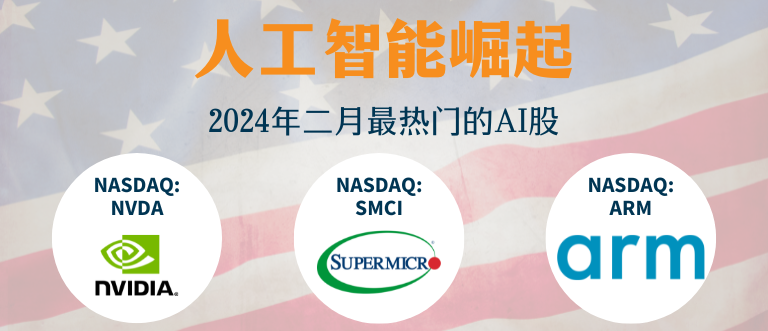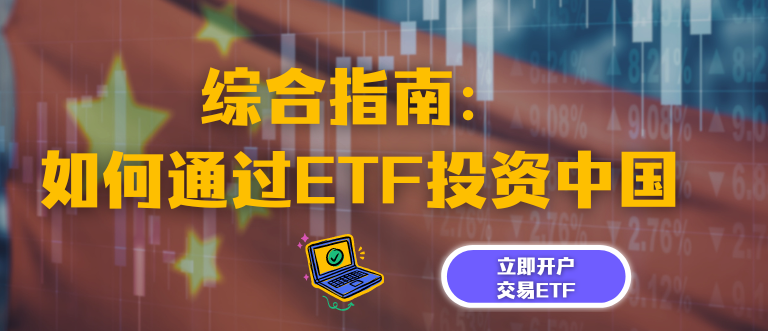Secondary Sharing
Table of Contents
Secondary Sharing
Without the intervention of the issuing business, investors can purchase and sell shares amongst themselves through secondary market operations. Brokers and dealer markets are important intermediaries because they help match buyers and sellers and make transactions easier. Secondary market trading procedures might be continuous trading, where orders are fulfilled according to a set of rules, or auctions, where buyers and sellers compete to match their orders.
What is Secondary Sharing?
In contrast to primary shares, which are issued and sold by a firm, secondary shares are sold by current shareholders, such as early workers or investors. Using this method, early investors can get a return on their investment in the firm before it becomes public or is bought out.
Although secondary sales are possible at any point in time, they are more prevalent in later rounds of investment when the valuation of the firm is much larger than in previous rounds. For workers and early backers, they mean a chance to see a return on their money. Careful management is required for these deals because of the impact on the capitalization table and the possibility of legal or public image problems.
Understanding Secondary Sharing
Buying and selling large numbers of publicly traded firm shares on the secondary market by current investors. The firm has previously offered these shares as part of its IPO. Neither cash nor more shares will be issued to the public firm in such a scenario. Stock transactions instead take place between individual investors. In a main offering, the corporation issues fresh shares of stock. This is distinct from that. It is the shareholders, and not the business, who will receive the proceeds of the secondary offering.
Initial public offerings (IPOs) allow privately held enterprises to sell shares to investors who are looking to fund the company. The first public offering (IPO) is the initial public offering (IPO) of a company’s shares to the general public. To put it simply, these are brand-new securities offered to the public in the first market. The money from the sale might go toward acquisitions, working capital, or some other use for the business.
Once an initial public offering (IPO) has concluded, investors have the option to sell their shares to the public through the secondary market. Instead of benefiting the firm whose shares are transferred, the seller receives all of the proceeds from the secondary offering. The term “follow-on offering” describes the situation in which a corporation does a subsequent offering. For reasons like debt financing, acquisitions, or R&D funding, this may be necessary.
On the other hand, shareholders may let the firm know they’re ready to sell, and some businesses could even provide follow-on products to help their customers refinance their debt at cheap interest rates.
Working of Secondary Sharing
In an initial public offering (IPO), investors purchase shares of stock from a private company to finance the business. Initial public offerings, or IPOs, are the initial sales of a company’s shares to the general public. The primary market is where investors may purchase these brand-new securities. Proceeds can be utilised by the corporation for many objectives, including funding day-to-day operations, making acquisitions, and more.
Investors have the option to make secondary offers to the public through the secondary market or the stock market once the initial public offering (IPO) is over. Investors hold the securities offered in a secondary offering and sell them to another investor or investors through a stock exchange, as previously stated. Thus, in a secondary offering, the seller, and not the firm whose shares are traded, receives the cash.
Secondary offerings, often known as follow-on offerings, are sometimes conducted by companies. This can be necessary if the company has to pay off its debt, buy other companies, or put money into its R&D pipeline.
Companies may also provide follow-on offers to refinance debt while interest rates are low, or investors may let the firm know that they want to sell their interests.
Types of Secondary Sharing
There are two distinct varieties of secondary offers available: dilutive and non-dilutive. The distinctions between them are detailed below.
Non-Dilutive Secondary Offerings
Because no new shares are generated in a non-dilutive secondary offering, the shares owned by current shareholders are not diluted. The shares are being offered for sale by private shareholders, including directors or other insiders, who are looking to diversify their holdings. As a result, the issuing firm may not reap any benefits.
The increase in available shares may enhance the trading liquidity of the issuing business’s shares, allowing more institutions to take non-trivial holdings in the company. After the lock-up period ends, this type of secondary offering becomes commonplace in the years following an initial public offering.
Dilutive Secondary Offerings
The acronym “FPO” stands for “follow-on public offering,” which is another name for a dilutive secondary offering. This kind of offering happens when a corporation dilutions current shareholders by creating and selling new shares. A firm’s board of directors authorises this offering when they decide to sell more stock by increasing the share float.
Earnings per share (EPS) are diluted as the number of outstanding shares rises. The money may be used to pay off debt or fund expansion, or it can assist the firm in accomplishing its long-term goals. For stockholders with shorter time horizons, this might not be a good thing.
Example of Secondary Sharing
In 2013, Mark Zuckerberg, CEO of Facebook, sold over 41 million shares to other investors in a fascinating secondary sale. Instead of the firm receiving the funds, he received them from investors as he was selling his shares. His tax liability was allegedly the motivation for his selling the shares.
The firm did raise capital for internal operations through Zuckerberg’s secondary offering and the issuance of more shares to the general public. It is usual practice to combine main and secondary sales while holding an offering.
An IPO is a firm’s first sale of shares to the general public. Primary shares are the ones offered for sale in an initial public offering (IPO). Shares go on sale on secondary markets like the Nasdaq or the New York Stock Exchange after an IPO. Secondary shares are those traded on a market other than the primary market.
Investors can access secondary shares through two channels: broker-dealers and registered investment advisors (RIAs).
The practice of buying and selling securities on behalf of customers is known as broker-dealership. FINRA is in charge of overseeing the financial industry’s broker-dealers.
Any business that helps people with their investments must be a registered investment adviser. The Securities and Exchange Commission is in charge of overseeing RIAs.
Frequently Asked Questions
When a corporation goes public, it issues primary shares, which are the first shares to the public. The opposite is true for secondary shares, which are exchanged on the secondary market by investors who already possess them.
Existing stockholders can profit by selling their shares to a third party in a transaction known as a secondary sale. When a corporation sells shares to investors and reinvests the money, that’s called a “primary” issuance.
The sale of shares by an investor to an outside party is known as a secondary sale. A secondary sale cannot take place concurrently with a purchase of the firm for it to be considered such. Selling the shares to another investor is the alternative.
Instead of buying shares from the firm directly, secondary shares are acquired from current shareholders, such as investors, current or former workers, or both.
Instead of the issuing business selling the securities directly to investors, this market facilitates trading amongst investors. Investors can swiftly and easily sell their assets on the secondary market if they need cash because of the liquidity it provides.
Related Terms
Most Popular Terms
Other Terms
- Options expiry
- Adjusted distributed income
- International securities exchanges
- Settlement currency
- Federal funds rate
- Synthetic ETF
- Physical ETF
- Notional amount
- Negative convexity
- Jumbo pools
- Inverse floater
- Forward Swap
- Underwriting risk
- Reinvestment risk
- Final Maturity Date
- Payment Date
- Secondary Market
- Margin Requirement
- Mark-to-market
- Pledged Asset
- Yield Pickup
- Subordinated Debt
- Trailing Stops
- Treasury Stock Method
- Stochastic Oscillator
- Bullet Bonds
- Basket Trade
- Contrarian Strategy
- Exchange Control
- Notional Value
- Relevant Cost
- Dow Theory
- Speculation
- Rand cost averaging
- Sustainable investment
- Stop-limit sell order
- Constant prepayment rate
- Covenants
- Companion tranche
- Synthetic replication
- Beneficiary
- Reverse stock splits
- Quiet period
- Prepayment risk
- Interpolation
- Homemade leverage
- Hyperdeflation
- Hope Credit
- Prime bank investments
- Purchasing power
Know More about
Tools/Educational Resources
Markets Offered by POEMS
Read the Latest Market Journal

本文旨在为中级外汇交易者提供必要的信息和知识。它将涵盖我们上一篇文章 “五分钟看懂世界上最活跃的市场-外汇差价合约(FX CFD)...

解锁台湾股市的投资潜力!深入了解由强大的技术驱动型经济推动的股票市场,2023 年机械和电气设备将占出口的 69%。在政治稳定、投资者友好的法规和健全的法律框架下,探索台积电和富士康等全球顶级企业。台湾股市值得称赞的历史表现和在国际贸易中的的重要性使其更具吸引力。在这个科技实力雄厚、经济稳定、充满活力的股票市场中,抓住增长机遇!

了解外汇市场 外汇交易市场又称外汇市场,是一个买卖货币的全球性金融市场。它是全世界规模最大、流动性最强的金融市场,每日交易量超过 6 万亿美元。但外汇市场有一个重要却常被忽视的一点,就是它受交易心理的影响。在本文中,我们将探讨外汇市场的复杂性,还有把重点放在交易心理与传统交易策略共同发挥的关键作用...

五分钟看懂世界上最活跃的市场 -外汇差价合约(FX CFD)
外汇交易市场俗称外汇或外汇市场,是全球金融市场的支柱。它是世界上最活跃的市场,2022 年 4 月,全球交易额达到创纪录的每天 7.5 万亿美元[1] 。这个活跃的市场为交易者提供了利用货币价格波动赚取利润的机会。在本文中,我们将解释外汇市场的基本原理,助您了解其投资机制。 什么是外汇? 外汇市场是一个分散的全球市场,世界上所有货币都在这里进行交易...

随着通胀数据趋向 2% 的理想目标,人们普遍乐观地认为,在任何可能的降息之前,市场都不会受到不利影响。以下是美股市场2024年的一些重要事件,投资者在做出投资决策时可以参考留意。

根据《东南亚态势报告:2023》,失业和经济衰退是当前东南亚面临的主要挑战。各国采取了各种政策和措施以恢复经济,尽力摆脱新冠疫情的影响。尽管如此,越南在经济和社会方面展现出了令人满意的复苏迹象,经济增长逐季上升,成为世界经济的亮点之一。虽然全年GDP增速放缓至5.05%,低于政府6.5%的目标,但越南仍然是地区和世界经济增速较快的国家之一。






















